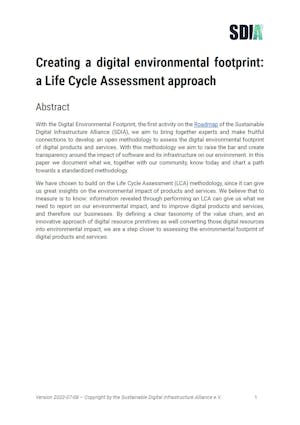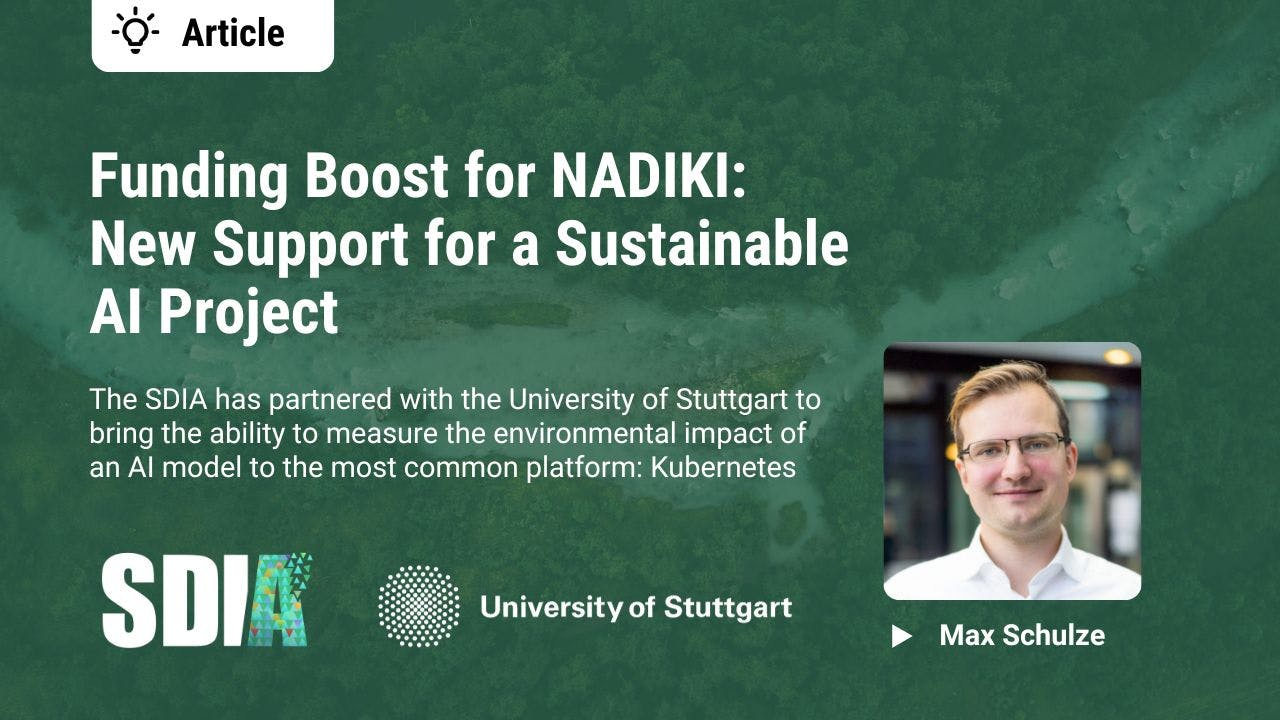As the first activity on the SDIA Roadmap, our Digital Environmental Footprint (DEF) work brings together the right expertise and connections to develop an open methodology for assessing the digital environmental footprint of digital products and services. With this methodology we aim to raise the bar by creating transparency around the impact of software and its infrastructure on our environment, enabling those who offer digital products and services to lower their environmental impact, and for consumers to make informed purchases. Furthermore, developers, architects, and software vendors in general can gain insights regarding where the environmental impact ‘hotspots’ are in their products.
Our paper entitled: Creating a digital environmental footprint: a Life Cycle Assessment Approach documents what we, the Alliance, know today and charts a path toward a standardized methodology.
We have chosen to build on the Life Cycle Assessment (LCA) methodology as it provides a holistic view of the environmental impact of digital products and services (software). By defining a clear taxonomy of the value creation chain, an innovative approach to digital resource primitives, and converting those digital resources into their environmental impact, we are a step closer to assessing the environmental footprint of digital products and services.
LCA also allows for comparison between different products and services, and can, for example, help customers choose the most sustainable option. It is able to cover many aspects of the complex digital value chain. Existing standards already define the basics of the LCA methodology and its quality requirements. Part of this can be a review process, where an independent party reviews the results, which can help create Environmental Product Declarations (EPDs).
We recognize that digital products and services, together with their supply chain are incredibly complex. There is currently little to no data or tools available to accurately measure the environmental footprint of digital products and services. By providing a new, clearly defined taxonomy and framework to describe the complex value chain, is a change of perspective that we think will drive us forward.
Finding out the environmental footprint of a digital product is useful. But it creates new questions, such as, who is creating the environmental impact within the value chain and who is responsible for reducing it? Our taxonomy also has the added benefit of creating a simplified version of roles and responsibilities along the value chain.
The SDIA community is working together on advancing the thinking behind the Software LCA methodology. Already, it released a mathematical approach to convert digital resources into energy use. To develop the methodology for the Digital Environmental Footprint, the SDIA has a set of clearly defined principles for its development as an overarching, independent approach to quantifying the environmental impact.
- Transparent: Methodology, framework, and calculations must be open and accessible to all stakeholders; digital products and services are enabled to create transparency on their own environmental footprint.
- Trustworthy: All information gathered and reported must be verifiable and scientifically proven to ensure trustworthiness.
- LCA Approach: Utilize the existing LCA methodology and collaborate with academia to adapt existing frameworks to be applicable to digital products & services.
- Open standard: Create an open standard that is accessible to all stakeholders at no cost and is non-competitive.
- End-to-end: Make the entire environmental footprint across the supply chain and digital product & service lifecycle visible to all stakeholders.
- Open source: The methodology, tools, and frameworks should be part of the collective equity of society to support the reduction of the total environmental impact of the digital sector.
- Impact focused: Focus on energy, resource, and pollution reduction rather than merely efficiency, in order to combat the climate crisis by minimizing the environmental impact burden created by the digital economy.
We want companies to be able to feel empowered to conduct Life Cycle Assessments of software themselves and feel empowered to share this information with their customers, to improve, and create a more sustainable future together.
Please refer to our paper to gain deeper insights into how to do this.

.jpg?ixlib=gatsbyFP&auto=compress%2Cformat&fit=max&rect=0%2C44%2C600%2C800&w=600&h=800)


%20(2).png?ixlib=gatsbyFP&auto=compress%2Cformat&fit=max&w=1280&h=720)

.jpg?ixlib=gatsbyFP&auto=compress%2Cformat&fit=max&w=1800&h=600)